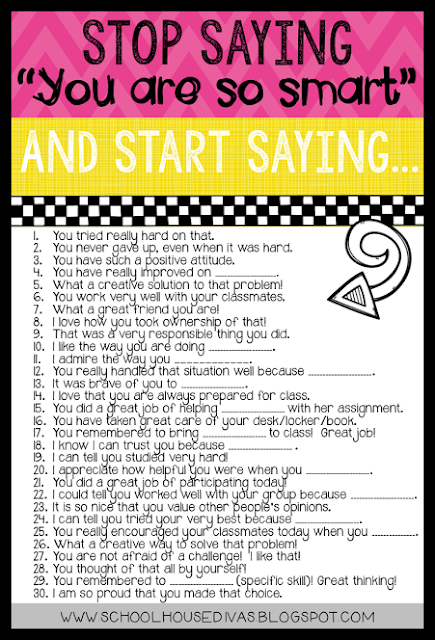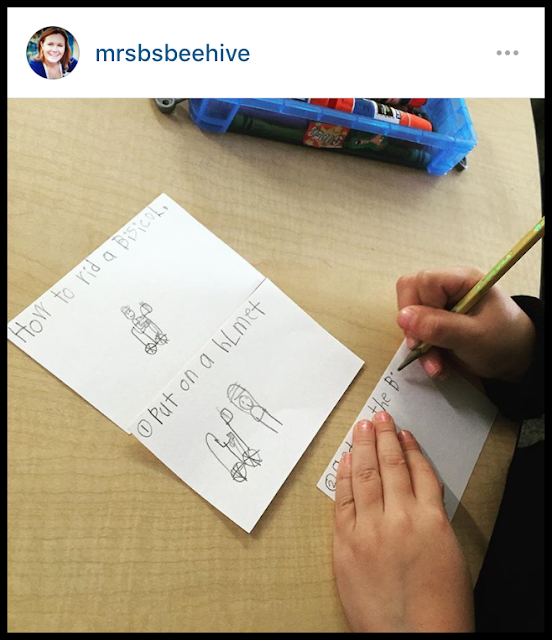Let’s talk about 5 ways we can build writing confidence in kindergarten. If your kids are like mine, some are willing to jump in with both feet and test out the writing waters and some are very reluctant.
Every year, I have students that are very fearful to take the first step. Some who are hesitant, already know all of their letter sounds and are more than ready to start putting their thoughts on paper. I tell my students over and over that it doesn’t have to be perfect and that we are just practicing.
Regardless of how many times I repeat this, I still occasionally get panicked looks, and sometimes even tears. They tell me – “I can’t do it!” “I don’t know how to write!”
I decided to write a post sharing my best tips and tricks on how I build writing confidence in my kindergarten students to help them get over their fears and become successful writers!
#1 Help them set writing goals for themselves
Students who struggle with their confidence watch adults in their lives as a measure of what writers can do. They observe adults writing emails, texts, and notes at home, and think, “there’s no way I can do that!” They feel the need to possess all the skills before they even begin.
To help overcome this fear, I have my students set small goals for themselves. I meet with a couple of students each day during our writing time. We talk about their progress and set realistic goals together.

Some students are just beginning with the basics of trying to identify the beginning sound of a word and write it down.
I see a big cat = I s a b c
Others have their beginning and ending sounds down.
I see a big cat = I se a bg ct.
Some students have their vowel sounds down and a decent sight word bank to draw from. These students are ready to work on more challenging goals like capitalization and spacing between their words.

Other students can write sentences but need to work on refining their writing with more detail. I find it amusing how some of my best writers just can’t be bothered with neatness because they are in such a rush to get their thoughts on paper!
Each student has different needs. Meeting them where they are and providing them with realistic goals helps them to grow.
If you would like a free copy of these writing goal sheets, just fill out the information below:
#2 Praise their efforts often
9 times out of 10 if a kindergarten student is lacking writing confidence consistent praise quickly changes their attitude! Noticing when they write down the correct beginning sound for a word or acknowledging that their picture matches their writing is so important!
I give public and private praise to the students often. Stickers and Scentos markers are great for extra motivation! I work at a school with only one class per grade, so I work very closely with the Pre-K-2nd-grade teachers.
Oftentimes, we have our students go and read to another teacher to get some additional encouragement. They come back beaming saying, “Mrs. Vasquez says I’m ready for first grade!!!!!” : )
Growth Mindset
I came across this pin on Pinterest the other day from Schoolhouse Diva that I just absolutely loved! She has a free download of this sheet as well!
It’s so important to give students specific feedback. Don’t tell them they are smart, and that’s why they knew the answer. I have really tried to make a conscious effort this year to be specific when praising my students.
It didn’t take long for me to see the benefits of this strategy. Now, I often hear in my class (after a student has answered a question correctly) – “Did you see that Mrs. B?!?! When you first asked the question, I didn’t know the answer, but I took my time and really thought about it, and then I knew it!!!!
#3 Provide opportunities to share with their peers
I’m going to be honest with you, when I first started doing this, I thought it would be a disaster! Wouldn’t Maria notice that her writing skills were far below that of Nicholas’? Wouldn’t she be embarrassed to show her work, when her sentences consisted of an unrecognizable string of letters, while Nicholas was writing a beautiful complete paragraph?!?! With trepidation, I began a sharing schedule, and guess what?!?!? Nobody cared what their work was like compared to their fellow students!
They were so happy to get up in front of the class and share, that they could’ve cared less about what the person before or after them was presenting!
During sharing students are allowed 2 comments and 2 questions for each piece of writing shared. The praise they get from their peers boosts their confidence, and they LOVE answering questions about their work!
Here’s a quick example of a sharing schedule that I have. If you would like a copy, click the link below:
Sharing Schedule Freebie

#4 Give them the tools and environment they need to be successful
Mini-lessons are a great time to build excitement. Equally important (if not more so) is setting the expectations for noise level, and collaboration allowed (or not).
I put on our Too Noisy app for volume control. I project my screen from my iPad or iPhone onto the whiteboard. When students are quiet, the app gives them a star every 2 minutes. If you get the paid version of the app ($4.99) you can adjust how often they get rewarded with a star.
The independent writing time of my writing workshop is 20 minutes. I put the star interval at 2 minutes so that they know when they get their last star the independent writing time is over.
The pro version of this app also allows you to adjust the amount of noise allowable. You can also change the background images to have some seasonal fun and keep it interesting.
You can have the stars add up to prizes if you want to, whatever works best for your students.
Too Noisy App

I put on some soothing classical music during this time and let the students sit wherever they choose.
I provide them letter sound sheets and personal sight word lists if they would like to use them. I let them know where to get more paper, and what to do when they are done with one piece of writing and are moving on to the next one. (All of this is done through a series of mini-lessons at the beginning of the year).
They know that they need to work quietly the entire time. I meet with students one-on-one during this time, and they know that they are not to interrupt me unless there’s a true emergency.
Do they occasionally talk to each other during this time? Yes, but 99% of the time they are asking another student for writing assistance. They ask how to spell a sight word, or what letters are contained in a particular digraph. When I hear these hushed conversations my heart is full of happiness. I love that they can rely on each other as part of a learning community!
Writing Materials
Recently I saw an awesome idea on Instagram about using index cards for our how-to writing. kids have loved using them, and they are a huge motivator! You’ve got to keep materials and resources new and exciting as you move through the writing genres.
#5 Have a consistent time every day for writing
The writing routines that my students have down were not learned in a day. It took repetitive practice. After a couple of week’s time, the students had it, and at this point, in the year I feel confident that they could conduct a writing workshop without me even being in the room!
As we move through the kindergarten writing standards, our focus on what we write changes. The routines and practices of clearing our minds and working in a quiet and productive environment do not.
Building writing stamina takes time, and tracking how long you can have a sustained period of quiet is important. You may only start with 5 minutes, but that’s okay! Tomorrow will be 6 minutes, and before you know it, 20 minutes will be a piece of cake.
Kindergarten Writing Confidence Resources
Scaffolding is another very important tool in building kindergarten writing confidence. I use worksheets such as the ones below to help them with guided practice. We work on concepts such as capitalization, end marks, finger spacing, and sounding out words.
This guided practice gives them the assistance they need to take baby steps into the world of writing. Students are sometimes overwhelmed by a blank sheet in front of them, and this Beginning Writing Skills resource helps them to gain confidence in their writing.

I hope this post was helpful in providing ideas to build writing confidence in your kindergarten students! If you have any other tips or tricks that have worked for you, I would love to hear about them in the comments section below! Further kindergarten writing resources can be found on my website!











